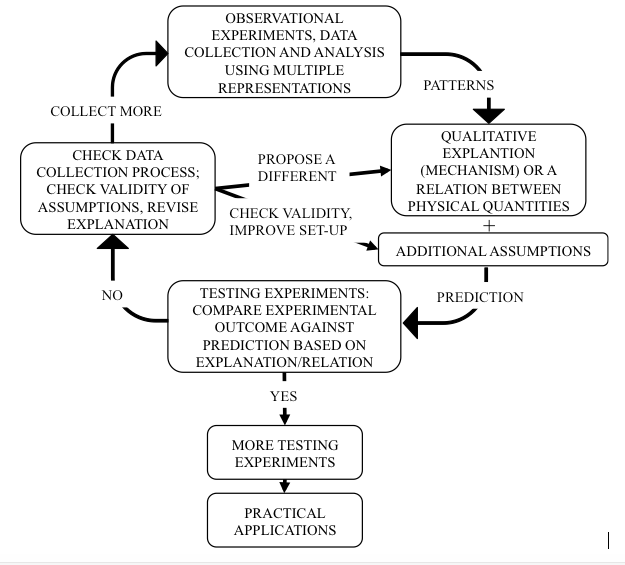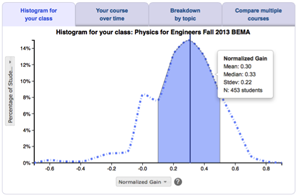Investigative Science Learning Environment (ISLE)
How to implement
For support implementing the ISLE approach, go to Resources section for links to materials and community for implementing ISLE developed over the last 20 years. The ISLE developers have put together a list of steps to take for adopting the ISLE approach.
The ISLE system has been used in large classes (over 500 students) and in smaller classes. The format for the instruction depends on the format of the course.
For example, in one large class, a two-week unit starts with students observing phenomena in the first lecture (we will call lectures “large-room meetings”, as the students participate actively during these periods). These phenomena are lecture demonstrations selected according to the criterion of simplicity–making sure the pattern that students should see is clear. The students work in groups of two/three to record their observations, look for patterns in these observations, and analyze the experiments in various ways to help produce qualitative explanations that account for their observations. Here the instructor helps them by suggesting what representation to use for their analysis. Students then use the different explanations to make predictions about a testing experiment proposed by the professor or they suggest their own testing experiments. This is done through interactions with representatives of the groups, voting, or an electronic response system. The testing experiments are used to discriminate among the different explanations.
The main difference between the observational experiments at the beginning and the testing experiments that come later is that students do not make predictions about the outcomes of the observational experiments but they do make predictions for testing experiments based on the explanations that they are testing. In this first large room meeting or in a second one, students identify relevant physical quantities.
Students look for patterns in experimental data that relate these quantities—to devise a relationship between them–called a “rule”. These “rules” are then subjected to experimental testing again. Sometimes students analyze data that is collected for them during a demonstration or often they observe the experiment from which the data can be collected but use the table of prepared data for their analysis. Then, students use the qualitative explanations and the quantitative rules to reason about new processes, to represent them in multiple ways, and to solve problems of easy to moderate difficulty. All this happens in an interactive format using a peer instruction approach.
During one or more recitations in this first week of the development for a particular unit or early in the second week, students work in groups on problems—qualitative problems, multiple representation activities, and often on more complex multi-part problems. They also evaluate solutions to the problems devised by other students. The lab related to this conceptual area occurs during the second week and involves more complex quantitative testing experiments and experiment problems. Students design their own experiments to test a concept or to solve a problem. They practice hypothetico-deductive reasoning (if, then, but, therefore) to make predictions and to assess the results of the experiment. In lectures during this second week, a new cycle starts. As stated earlier, different formats are used depending on the size of the class and the class time available for each part of the course—lecture, recitation, and laboratory.
Students go through the same cycle for many concepts. The most difficult part of the cycle is to provide challenging questions that are based on real life examples so that the students can see that the explanation that they invented “works” or “makes sense” for the real world and addresses the ideas that they had before. This sequence allows the students to answer the question “how do I know this?” at every step of the cycle.
The rationale for different elements of Investigative Science Learning Environment (see the figure below) and the practical implementation comes from several different areas: workplace studies, studies of the nature of science and scientific reasoning, brain studies, studies of students’ learning of science, and studies of cognitive apprenticeship.





